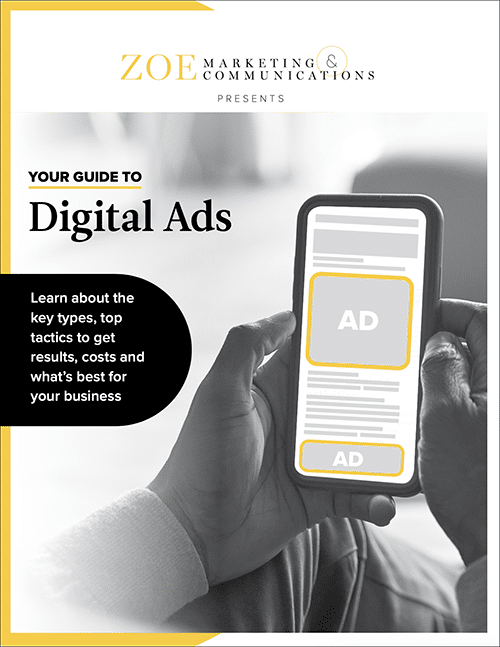
Download Your Digital Ads Guide
Learn how digital ads can help your business, including the tools, techniques and strategies to create successful campaigns.
November 8th, 2022 | 2 min. read
By Kim Kovelle

Before the house lights dim, performing arts companies must tackle the challenge of filling seats — often on tight budgets.
The good news? Theatergoers are coming back. According to Statista, the arts, entertainment and recreation industry has rebounded to pre-pandemic levels, with audiences eager for live performances. The challenge is getting them to choose your show over others.
At Zoe Marketing & Communications, we’ve worked with clients in metro Detroit and Chicago to promote local and touring performances. Here’s a look at five of the most effective ways to market your shows, both paid and unpaid, to reach your audience.
“Earned media” refers to free publicity, like coverage from local news outlets or event calendars. Make the most of it by:
Don’t forget retargeting, too. If your earned media links to your website, use a retargeting pixel on the landing page to reengage visitors who don’t buy tickets.
Theater audiences aren’t one-size-fits-all. Be clear about who you want to reach:
Your target groups may vary by show or season. Consult with your team to set priorities, and test your strategies as needed.
Social media platforms, particularly Facebook and Instagram, let you reach the right audience with precision. Use your show’s photos to create engaging ads targeted to:
Paid social media campaigns help you reach new audiences, but don’t forget organic posts. Behind-the-scenes peeks, show previews and stories are all great ways to engage your existing followers.
Email is a direct way to stay top of mind with potential attendees. Craft campaigns tailored to specific audiences, whether they’re your existing subscribers or new contacts from paid lists.
Retargeting ads can keep your show visible to people searching for activities near your theater. For example, if someone Googles “things to do near me,” your ads can follow them as they browse other sites.
While this strategy aligns well with your audience, it can be pricier. Pairing with an agency that offers access to the right tools can help maximize results.
Marketing your performing arts company requires focus and creativity. Narrowing your marketing efforts on a few key areas, paid and unpaid, can make an impact.
Ready to bring more patrons to your performances? Talk to us. We can help you build a strategy tailored to your goals.
Still exploring your options? Check out these helpful reads:

Learn how digital ads can help your business, including the tools, techniques and strategies to create successful campaigns.
As Zoe Marketing & Communications’ content manager, Kim Kovelle brings over 20 years of writing and editing experience in metro Detroit. She has strong roots in community journalism and a knack for making complicated topics make more sense.
